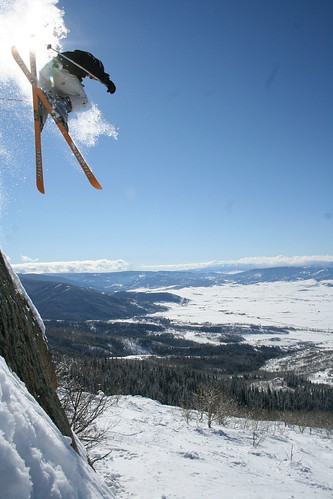So there is indeed a danger – but for those who think they stand safely on the peak. The rest of us can go skiing and hiking and explore the mountain, and find places all over its slopes that one can remain if one chooses. That isn’t to say that the slopes can’t be slippery, just that there is no obligation to slide to or stay at the bottom, and no stable pinnacle that one can dwell on for any length of time.
I hope that most readers will understand that what I’m mainly offering is an affirmation that (metaphorical) skiing is fun, and I hope you’ll find the courage to join in and explore the slopes of our human existence!
On the other hand, as I thought about the image once again, it seems to me that the image as it is most commonly used is precisely backwards. Here’s why:
First, in my experience, changing your mind on one topic doesn’t automatically lead to a rethinking of other areas which logically ought to be affected by the change. Educators will tell you this. Pastors will tell you this. I think everyone knows it to be true in their own experience. It may be that those who are concerned to be logical and think things through will eventually realize the additional implications of changing their mind on the topic in question. But it is rarely automatic, much less a fast and direct path such as the downhill slippery slope metaphor suggests.
Second, even when education, reading, and/or thinking suggest that we need to change our minds about our cherished beliefs, we rarely do so willingly. Anyone who has had their assumptions challenged, whether in a university classroom or an informal conversation, will surely acknowledge that they did not immediately confess to having been wrong and undergo a complete revision of their thinking. We resist. We deny. We look for counter evidence and for arguments that will prevent the change. Sometimes, the mere fact that someone we respect continues to hold the view we wish to cling to will encourage us to do the same, even if we have amassed an incredible number of reasons and arguments that are pushing us to change our minds. Sometimes we say “I don’t see any logical reason why I should continue to think or believe this, but deep down, in my heart, I want to, and so I will.” That’s hardly a slippery slope.
 Or maybe it is, but one that leads uphill from our assumptions and upbringing rather than downhill. Perhaps education and learning are best likened to a climb up a slippery slope. The easier path of least resistance is to return to old habits of thinking and action, even after learning new and improved ways of doing things. Whether you are learning to play an instrument or studying the Bible, old habits re-emerge naturally, and it takes effort to improve our playing, our thinking, our understanding, or anything else. The slippery slope lies behind us, and learning is not something that puts us in danger of falling downhill, but allows us slowly and painfully to climb upwards.
Or maybe it is, but one that leads uphill from our assumptions and upbringing rather than downhill. Perhaps education and learning are best likened to a climb up a slippery slope. The easier path of least resistance is to return to old habits of thinking and action, even after learning new and improved ways of doing things. Whether you are learning to play an instrument or studying the Bible, old habits re-emerge naturally, and it takes effort to improve our playing, our thinking, our understanding, or anything else. The slippery slope lies behind us, and learning is not something that puts us in danger of falling downhill, but allows us slowly and painfully to climb upwards.
And so I find myself less inclined now to ditch the problematic notion that exposing yourself to new and different ideas takes you down a dangerous slippery slope, and more inclined toreverse it. Exposing yourself to new information will potentially allow you to climb to higher ground and see further than you currently can. The slippery slope is a real danger, but the danger is that you will prefer to stay put and seek the security that seems to afford, or in spite of learning and growing will allow yourself to slip backwards down the slope.
And so let’s challenge those who think they are in danger of sliding down a slippery slope if they learn new things to join us in realizing that the slippery slope rises before them, and only by exposure to new information can we climb upwards and hope to see more clearly from higher ground.
Sliding down does have its pitfalls, but climbing up is by far the bigger challenge.
Of related interest:
Right and Wrong about the Slippery Slope (Rachel Held Evans)














